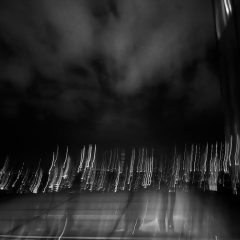For the sound design of The Alphabet, I will be using a mixture of recording techniques. The primary ones featured in this blog will be hydrophones, contact microphones, and handheld field recorders. I will be discussing where I want to record for each of these types of microphones and why.
Hydrophone
Hydrophones are omnidirectional microphones designed to record sound underwater from any direction. Hydrophones were first used by countries during the First World War. People were sent into submarines and used hydrophones to pick up on signals from possible enemies. Hydrophones in more recent years are used to record the sound of the ocean or water in general, used by shows like Blue Planet to record the sound of a location underwater.
My use of the hydrophone will be to experiment with recording in water, and take those recordings and manipulate them in Ableton. I want to transpose them up, down, stretch them, and reverse them in order to experiment. I will be using the hydrophone to create the sound of blood, and other textures throughout the piece.
Where will I be using the hydrophone
I thought of using my sink with the hydrophone. I plan on cleaning the sink, then put the hydrophone in out of the way of the water coming down, so it doesn’t hit the hydrophone directly. I want to record the sound of the sink filling up and draining. When the sink is full and the tap has stopped running I would like to splash my hands in the water, run my fingers through it, and see what sounds and textures that create.

Contact Microphones
A contact microphone is a microphone that records vibrations when attached to an object (e.g. table). I find recording with a contact microphone gives whatever I am recording a dissonant, uneasy atmosphere.
I record contact mics through a dictaphone, my dictaphone of choice will be the Zoom H5 as it is very portable and has good sound quality. I will be doing lots of these recordings at home and or outside. If I record at university via using the foley room I will be using higher quality microphones.

When recording with contact microphones through a dictaphone, using the gain stage on the dictaphone like an instrument can be very helpful. By either turning the gain up or down on each sound you find, you can create a different atmosphere. If it is turned up it can be distorted, and dissonant. Meanwhile if recorded on a lower level can be much calmer and clearer. You have to be careful about turning the gain up too much, as elements of hiss can come into the track and ruin it.
The idea of using the contact microphone in my piece was through having to restart my boiler at home. I loved the sound of the water coming through the pipes and the hum of the boiler. So that’s what I plan on doing as of now.
